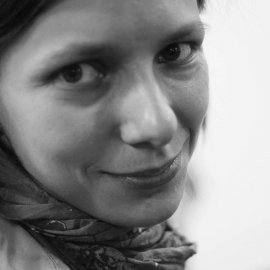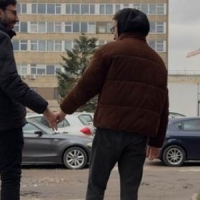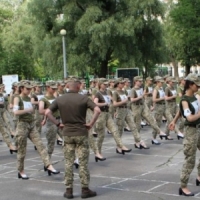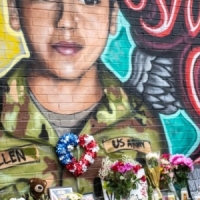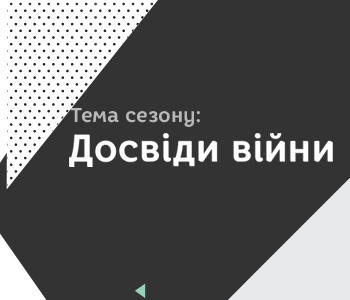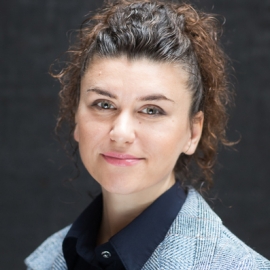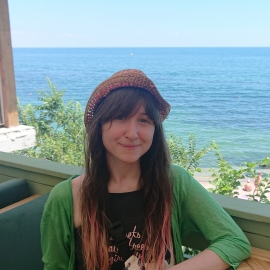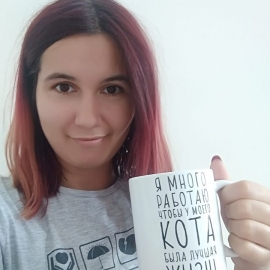The approximate end of Russia’s war against Ukraine remains vague in early 2025, along with its toll, including the amount of damage. However, early reconstruction began already in the spring of 2022 after the liberation of the first occupied territories (Kyiv Oblast). By the summer of 2022, it seemed reasonable to plan overall reconstruction, and in July, the Lugano Conference was held in Switzerland to outline the initial plans for reconstruction. The Ukraine Recovery Plan was presented at the conference and it included among its main principles “equal wealth” and “build back better.”[i] Subsequently, two more conferences were held along the same lines, in 2023 in London and in 2024 in Berlin.
First of all, it is worth noting that the reconstruction and prevention of further destruction by strengthening Ukraine’s self-defense capabilities (both through arms assistance from international partners and by developing and reinforcing the state’s own defense capabilities in the broadest sense) should be, and in fact are, parallel processes. Highly specific rear defense and reinforced front lines prevent not only the loss of human lives, but also the destruction of buildings, farms, entire communities, and established ways of life. Simultaneously, continuous hits to areas already rebuilt nullify the resources already invested in reconstruction. Any reconstruction should be based on the strongest possible defense.
A general problem is that the need to allocate significant resources for both recovery as a systemic change and reconstruction as an immediate rebuilding of destroyed infrastructure may reduce the budget available for social services or the capacity of services. While it is unlikely to completely avoid some constraints, approaches based on economic expediency alone, without a focus on people, should be avoided. External funding and confiscated Russian assets could help finance recovery, as well as prioritizing policies that foster employment of groups vulnerable to unemployment, internally displaced persons (IDPs), or veterans. At the same time, numerous studies show the positive effect of direct cash distribution to IDPs and to communities affected by poverty and natural disasters.[ii] Currently, Ukraine is also considering the option of financial compensation for people whose property was damaged.[iii]
Having outlined these two aspects as necessary preconditions, let’s move on to the gender aspects of the issue.
Gender equality in state recovery strategies
The 2022 Recovery Plan did not mention gender equality; it appeared there later in the process. In September 2023, the Platform for Gender Mainstreaming and Inclusion in Recovery was launched and presented. The platform is designed as an advisory body to the Commission for Coordination of Interaction of Executive Authorities on Ensuring Equal Rights and Opportunities for Women and Men and aims to coordinate cooperation between government agencies, civil society, business representatives, and international organizations to incorporate the principle of gender equality and social inclusion into the recovery process in Ukraine. The platform is coordinated by Olha Stefanishyna, Vice Prime Minister for European and Euro-Atlantic Integration, and Kateryna Levchenko, Government Commissioner for Gender Policy.[iv] During the first year of its work, the platform prepared Ten Steps for Gender-Inclusive Recovery of Ukraine.[v] The platform also has a Civil Society Coordination Panel, a group of non-governmental organizations (NGOs) that have an advisory role.
The International Conference on Ukraine’s Recovery in 2024 also announced the creation of the Alliance for Gender Responsive and Inclusive Recovery of Ukraine, which brings together governments, international financial institutions, United Nations (UN) and European Union (EU) agencies, businesses, and civil society organizations. In particular, it includes the JurFem Association of Women Lawyers of Ukraine and the Women’s Perspectives Center.[vi]
Gender-specific impact of war
War affects men and women differently, and it is not only about the state conscripting mainly men. According to the Third Rapid Assessment of Damage and Needs until 2024, prepared by the World Bank, the Government of Ukraine, the EU, and the UN, which was adopted as a roadmap for the Alliance’s work, the gender-specific impact of war includes:
- Female unemployment (as of April 2023, 72% of the unemployed were women);
- Women performing 16 hours more unpaid domestic work per week than men (despite the fact that men’s involvement has increased significantly);
- Risks of gender-based violence (GBV), including war-related sexual violence, human trafficking, and intimate partner violence;
- Lack of services for GBV survivors;
- Lack of women involved in planning and decision-making in humanitarian response and recovery, despite the fact that they actually play a key role in this regard;
- Increased vulnerability when female gender, older age, disability, and displacement are combined.[vii]
The assessment devotes special attention to the problems of veterans, and these problems, although not mentioned in the document, also have a pronounced gender dimension: a significant majority of military personnel and current or future veterans are men.
It is also expected that recovery strategies will be taken into account in the next National Action Plan for the Implementation of UN Security Council Resolution 1325 on Women, Peace and Security until 2025. UN Security Council Resolution 1325 on Women, Peace and Security, which is binding for UN member states, envisages restoring sustainable peace as one of its four pillars. In order to implement the Women, Peace and Security Agenda at the national level, Member States are encouraged to adopt national action plans (NAPs). Ukraine adopted its first 1325 NAP in 2016, the first NAP in the history of the resolution to be adopted during wartime. In 2020, Ukraine adopted the second NAP for the period until 2025, and work on the third, for 2026-2028, is now underway. The Government Commissioner for Gender Policy is working on the plan.
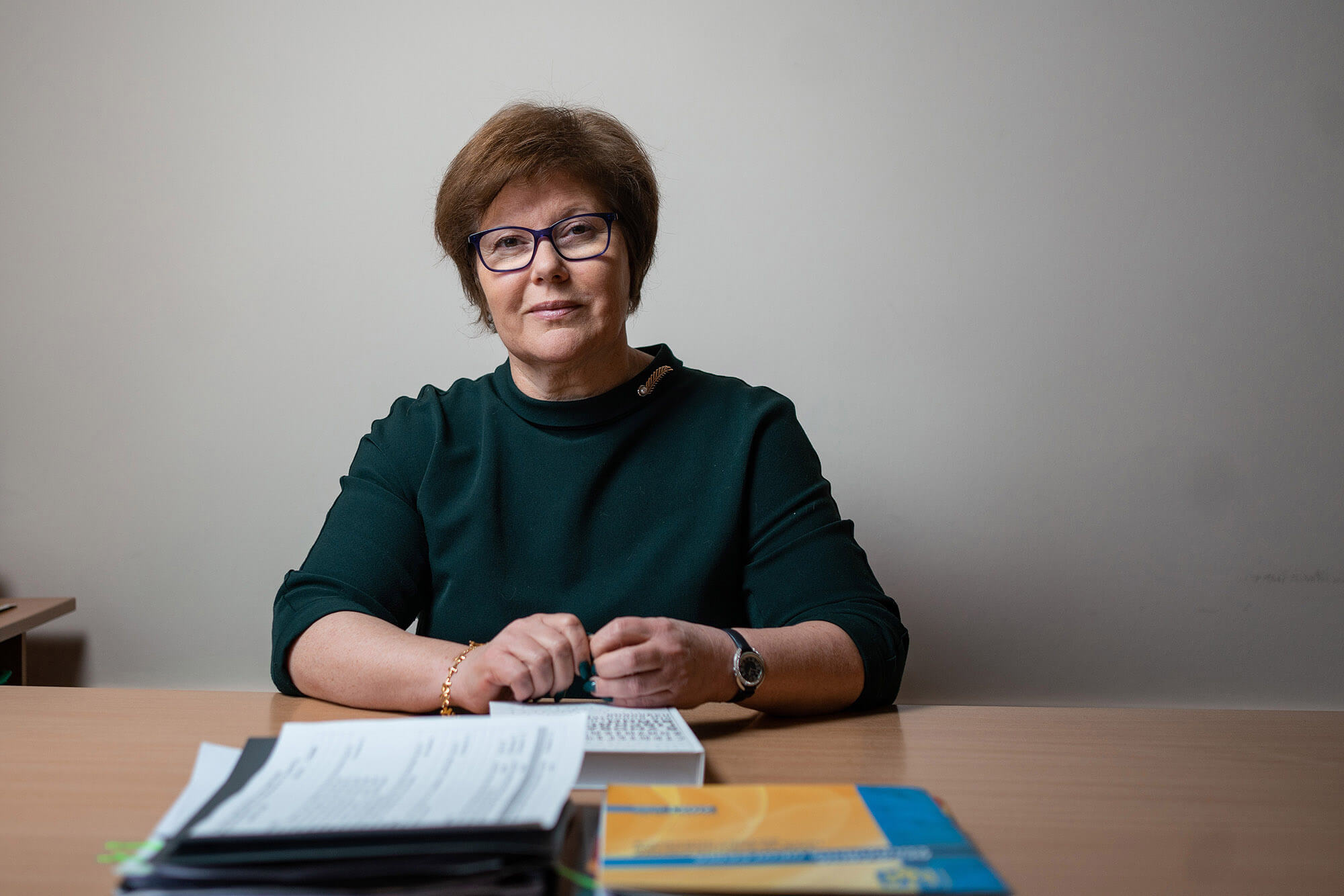
Government Commissioner for Gender Policy Kateryna Levchenko
Despite this elaborate strategizing, one cannot say that gender sensitivity is successfully incorporated in all aspects of recovery. Although recovery is associated with rebuilding physically destroyed buildings, it is worth remembering that people are the primary victims of war, and that any program should focus on the well-being of people living in Ukraine. Therefore, in this text, I will focus on three areas: veteran policy, assistance to victims of conflict-related sexual violence (CRSV), and the issue of women’s economic empowerment in the wake of war.
Veteran policy
A cross-cutting theme of recovery is the veteran reintegration policy. Some of these people will have severe disabilities and will probably be unable to work; others will be ready to return to the labor market immediately or at some point after demobilization. The preliminary estimate of the number of veterans is 5 million, but this figure may increase due to the general uncertainty about the course and duration of hostilities.[viii]
The Third Rapid Assessment of Damages and Needs until 2024 highlights various problems of veterans, including the difficulty of scaling up existing veteran benefits and services to the anticipated number of veterans.[ix] Given the large number of beneficiaries of the services and programs, both existing and expected, it may be advisable to move away from the approach of having separate spaces and other specialized institutions for veterans and towards making any state, municipal, or public institution inclusive of veterans’ needs. For women veterans, access to programs and services can be further complicated by gender stereotypes and the prejudice against women participating in combat.[x] It is important to reduce the gender gap in the availability of such services and programs, in particular, to make services available to women with children, or to encourage men to seek psychological assistance.[xi] However, there is currently no comprehensive assessment of how significant this gap is and whether it is tending to decrease.
Gender-sensitive recovery should also consider that the experience of veterans’ family members is also gendered, in particular, the families caring for veterans who were demobilized due to severe injuries or trauma. While the majority of these veterans are men, the majority of their caregivers and/or sole breadwinners are women. The infrastructural difficulties of obtaining adequate medical and domestic care mean that such injuries or trauma result in a great deal of unpaid care work by wives or mothers.[xii]
For a long time, the Ministry of Veterans Affairs did not have a clear document that would provide an understanding of the state policy on veterans and their families, its goals, objectives, and performance indicators; instead, civil society organizations prepared this concept.[xiii] Only on November 29, 2024, did the Cabinet of Ministers approve the Veteran Policy Strategy for the period until 2030 and the operational plan for implementing it in 2024-2027.[xiv] However, this strategy is also gender-blind, not reflecting the real difference in men’s and women’s experiences. Thus, the prospects for gender equality in veterans’ affairs remain vague.
Conflict-related sexual violence
As defined by the UN, CRSV is a form of gender-based violence that includes rape, sexual slavery, forced prostitution, forced pregnancy, forced abortion, forced sterilization, forced marriage, and any other form of sexual violence of comparable gravity perpetrated against women, men, girls, or boys that is directly or indirectly related to the conflict.[xv] In fact, in the context of hostilities, occupation, and captivity, it is impossible to assume consent to sexual relations, as all these situations are a coercion in severe form. For example, in the case against Dragoljub Kunarac, Radomir Kovac, and Zoran Vukovic in 2002, the International Criminal Tribunal for the former Yugoslavia decided that the very fact that a woman was held captive by the three individuals is sufficient grounds to believe that she could not have given voluntary consent to have sex with them, even in the absence of resistance from the victim.[xvi] The approach to the definition of sexual violence based on the absence of active consent was subsequently applied by criminal laws around the world, including Ukraine since 2019.
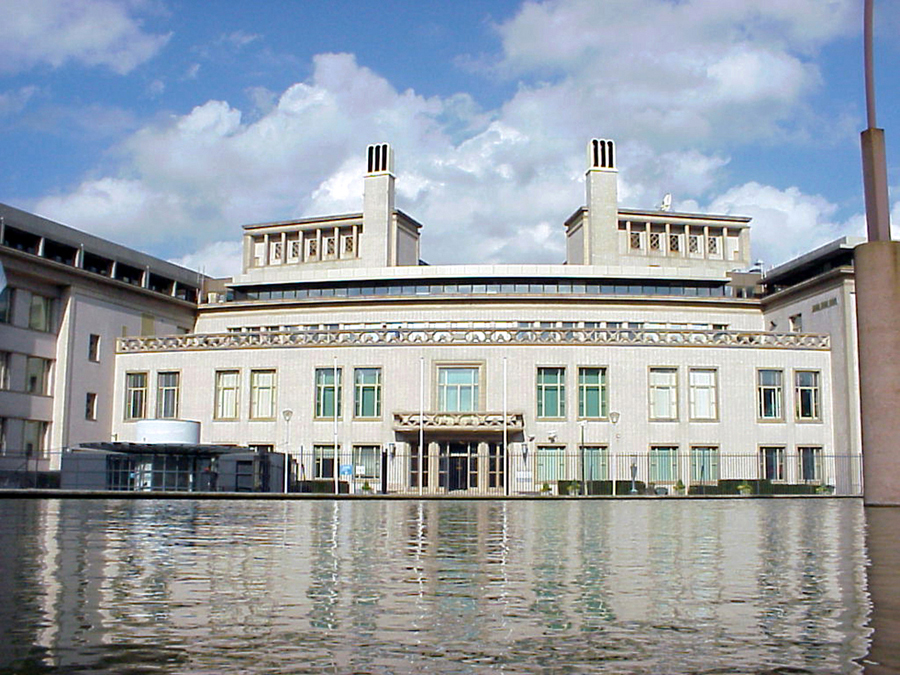
International Criminal Tribunal for the former Yugoslavia
Researchers point out that victims of CRSV can be, and often are, not only women and girls, but also men and boys. However, there are some gender differences in the way this issue is perceived. For example, legal professionals may have an unconscious bias that only women and girls experience CRSV, while in the case of men and boys, such violence is classified as torture or ill-treatment, which is inaccurate and obscures aspects of harm related to sex or sexuality, and leads to incorrect criminalization of the case. In addition, affected men and boys themselves may not have adequate vocabulary to express what has happened to them, or may not consider the violence against them as sexual.[xvii]
The facts of sexual violence against women and men by the armed forces of the Russian Federation, as well as their collaborators, have been witnessed in Ukraine on numerous occasions, and NGOs and charitable foundations have helped many victims.[xviii] In addition, experts translated into Ukrainian the Murad Code, a document initiated by Yazidi human rights activist Nadia Murad that sets minimum standards for safely and ethically collecting information on CRSV.[xix]
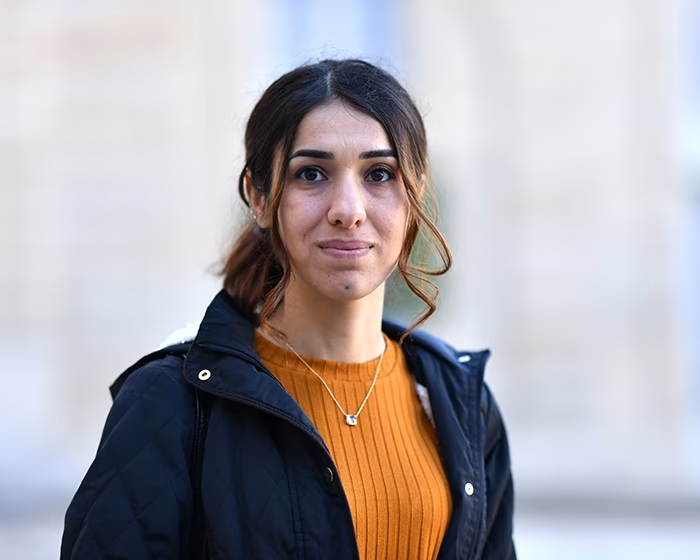
Nadia Murad
However, the policy of assistance to victims of CRSV should be secured for a longer period than civil society can realistically provide, as practice shows that victims may first seek assistance only months or years after the crime.[xx]
On November 21, 2024, Ukraine adopted a draft law on the status of victims of CRSV.[xxi] This draft law defines the procedure for making decisions on recognizing a person as a victim or a family member of a deceased victim, regulates the protection of the rights and personal data of such persons, sets out the basic principles for realizing the right to immediate interim reparations, and proposes creating a fund to pay immediate reparations to victims of sexual violence related to the armed aggression of the Russian Federation against Ukraine. A pilot project to provide interim reparations for victims has already been launched. Not only women but also men are actively seeking help. According to the Office of the Government Commissioner for Gender Policy, as of January 13, 646 people applied for reparations, including 377 men, 255 women, 12 girls, and two boys. The project has already paid reparations to 432 people, including 240 men, 184 women, seven girls, and one boy.[xxii] The actual number of victims, however, is estimated to be many times higher.[xxiii]
Unlike the veterans’ policy, the state has chosen a proactive approach to assisting survivors of CRSV, but real assistance may take decades. Government statistics show that men are somewhat more likely to apply for and receive reparations, but given the difficulties mentioned above in both the overall assessment of the number of acts of violence and the accuracy of such an assessment in relation to men, it remains completely unknown to what extent such proportions correspond to the actual gender ratio among victims.
Women’s economic empowerment
The economic capacity of the civilian population is a key component of the state’s defense capability and recovery. The need to allocate funding for recovery, both in the broad and narrow sense of the word, requires significant public and private resources, which, in turn, is impossible without an economically capable population. Given that a significant number of the population, mostly men, are in the ranks of the Ukrainian Defense Forces, therefore being financed by public money, some of whom have been killed, captured, or returned from the front with significant disabilities, the economic burden on the civilian population, including women, is growing.
According to the study “Challenges to Women’s Empowerment in the Labor Market and Entrepreneurship in the Context of Full-scale War and Gender Responsible Recovery of Ukraine,” the level of women’s employment decreased in 2023 compared to 2021.
The destruction and economic losses caused by the full-scale invasion contributed to the growth of women’s informal employment, especially self-employment in agriculture. The gender pay gap has rapidly doubled (from 16.7% in 2021 to 41.4% in 2023). The study also indicates that the core problem of lasting gender inequality of economic opportunities in the labor market in Ukraine is the deep differentiation of sectoral and professional specialization. At the same time, due to gender-asymmetric conscription, men are “scarce” in the labor market, but for women it is difficult to take on their job positions, both because of stereotypes and the additional burden of care work, other challenges of the war, and the lack of education and professional experience in male-specific industries that cannot be acquired quickly, such as engineering and technical spheres.[xxiv] However, even companies that declare their readiness to hire women and train them may experience difficulties. For example, in July 2023, a scandal erupted when a senior employee of Kyiv Metro, a company that had openly invited women to train with subsequent employment, directly told the candidates that “a woman is not capable of climbing into the cab” and “this whole idea of recruiting women is political.”[xxv]
Only in November 2024 did the Cabinet of Ministers approve a pilot project to organize vocational training for women for employment in fields in which they have traditionally been underrepresented, such as blue-collar professions. In particular, women will be able to become electricians, renewable energy system installers and maintenance workers, mechanics, tractor drivers, milling operators, etc. Women will be trained by an employer who is obliged to employ them after the training.[xxvi] The short-term and long-term effects of this project will have to be seen.
Conclusions
The reality is that recovery in Ukraine is slow and requires considerable efforts, costs, and special attention to gender sensitivity. Although there is an intention to make recovery gender-sensitive at the governmental level, at the level of individual sectors or ministries, the situation requires significant gender expertise and gender policies. For example, although the veterans’ policy took a long time to develop, it still turned out to be gender-blind in the end. The policy of working with victims of CRSV is difficult to assess due to the extreme secrecy of the topic, and strengthening women’s economic capacity is extremely slow, facing many difficulties and stereotypes.
Photo: Danylo Pavlov / The Ukrainians, ICTY staff / Wikipedia, Mustafa Yalcin / Anadolu Agency / Getty Images
Sources
[i] National Recovery Council. Ukraine’s recovery plan. July 2022. https://cdn.prod.website-files.com/625d81ec8313622a52e2f031/62c19ac16c921fc712205f03_NRC%20Ukraine%27s%20Recovery%20Plan%20blueprint_UKR.pdf
[ii] Give Directly. https://www.givedirectly.org/research-at-give-directly/
[iii] IDP status should be the basis for receiving reparations from Russia - Zholnovych // UKRINFORM. August 20, 2024. https://www.ukrinform.ua/rubric-society/3897092-status-pereselenca-mae-stati-pidstavou-dla-otrimanna-vidskoduvanna-vid-rf-zolnovic.html
[iv] Cabinet of Ministers of Ukraine. The “Platform for Gender Mainstreaming and Inclusion in Recovery” has started its work. September 19, 2023. https://www.kmu.gov.ua/news/rozpochala-robotu-platforma-zabezpechennia-hendernoho-meinstryminhu-ta-inkliuzii-u-vidnovlenni
[v] Ukrainian Women’s Fund. 10 steps for gender-inclusive recovery of Ukraine. https://uwf.org.ua/wp-content/uploads/2024/09/uwf_flyer_10steps_2024_ukr_printe.pdf
[vi] UN in Ukraine. With strong support from governments, UN agencies, the private sector and civil society, the Alliance for Gender Responsive and Inclusive Recovery in Ukraine is launched. June 12, 2024. https://ukraine.un.org/uk/271438-за-потужної-підтримки-урядів-агенцій-оон-приватного-сектору-та-громадянського-суспільства
[vii] The World Bank, the Government of Ukraine, the European Union, the United Nations. Third Rapid Damage and Needs Assessment (RDNA3) February 2022-December 2023. February 2024. https://ukraine.un.org/sites/default/files/2024-02/UA%20RDNA3%20report%20EN.pdf
[viii] After the war, Ukraine will have about 5 million veterans - experts // UKRINFORM. April 18, 2024. https://www.ukrinform.ua/rubric-society/3853958-pisla-vijni-v-ukraini-bude-blizko-5-miljoniv-veteraniv.html
[ix] The World Bank, the Government of Ukraine, the European Union, the United Nations. Third Rapid Damage and Needs Assessment (RDNA3) February 2022-December 2023. February 2024. https://ukraine.un.org/sites/default/files/2024-02/UA%20RDNA3%20report%20EN.pdf
[x] Martseniuk, Tamara, et al. “Invisible Battalion 2.0: Returning Women Veterans to Peaceful Life - Kyiv, 2019. https://drive.google.com/drive/folders/1Mo6lkspO6l6ij_loeJxLGaqQ4Ilbkeei
[xi] Hrytsenko, Hanna, et al. Recommendations for Reducing the Gender Gap in Access to Services for the Veteran Community - Kyiv, 2021. https://sss-ua.org/wp-content/uploads/2023/06/recom_gend.pdf
[xii] Polek, Tina, et al. Behind the Scenes of Care: Veterans’ Loved Ones and Care Work. https://www.pryncyp.com/wp-content/uploads/2024/02/turbota.pdf
[xiii] Kostyna, Ivona, et al. Concept of the policy on veterans and their families. Expert recommendations for the formation of an updated state policy on veterans and their families. К., 2023. https://www.pryncyp.com/wp-content/uploads/2024/01/veteranpolicy.pdf
[xiv] Cabinet of Ministers of Ukraine. Order of November 29, 2024.№ 1209-r “On Approval of the Veteran Policy Strategy for the Period up to 2030 and Approval of the Operational Action Plan for its Implementation in 2024-2027.” https://zakon.rada.gov.ua/laws/show/1209-2024-р#Text
[xv] Handbook for United Nations Field Missions on Preventing and Responding to Conflict-Related Sexual
Violence. 2020. https://www.un.org/sexualviolenceinconflict/wp-content/uploads/2020/06/2020.08-UN-CRSV-Handbook.pdf
[xvi] How Does Law Protect in War? ICTY, The Prosecutor v. Kunarac, Kovac and Vukovic. https://casebook.icrc.org/case-study/icty-prosecutor-v-kunarac-kovac-and-vukovic
[xvii] Oosterveld, Valerie. “Sexual Violence Directed Against Men and Boys in Armed Conflict or Mass Atrocity: Addressing a Gendered Harm in International Criminal Tribunals.” Journal of International Law and International Relations, Law Publications, 109, 2014. https://ir.lib.uwo.ca/cgi/viewcontent.cgi?article=1109&context=lawpub
[xviii] Detention of Denys Kulikovskyi from Isolation prison: new facts // Radio Svoboda. December 30, 2021. https://www.radiosvoboda.org/a/kulykovskyi-rozsliduvannia/31631769.html
[xix] The Murad Code in Ukrainian. https://www.muradcode.com/ukrainian
[xx] Sysak, Iryna. “She doesn’t even know how many men raped her”: 303 cases of war-related sexual violence // Radio Svoboda. June 19, 2024. https://www.radiosvoboda.org/a/v-ukrayini-zafiksovano-303-fakty-seksualnoho-nasylstva-zumovlenoho-viynoyu/32999415.html
[xxi] Verkhovna Rada of Ukraine. Draft Law on the Status of Victims of Sexual Violence Related to the Armed Aggression of the Russian Federation against Ukraine and Urgent Interim Reparations. https://itd.rada.gov.ua/billInfo/Bills/Card/42862
[xxii] Government Commissioner for Gender Policy Kateryna Levchenko. https://www.facebook.com/GovernmentCommissionerforGenderPolicy/posts/pfbid0R9TkCDxvqpJXZJX7GjVXq8ngY565fhEgPXCxDyB5LmCL6ZyMTyPK5GDn2pbvm1Ztl
[xxiii] Number of victims of conflict-related sexual violence may be 10 times higher than official statistics // Ukraine Media Center. October 16, 2024. https://mediacenter.org.ua/uk/kilkist-postrazhdalih-vid-seksualnogo-nasilstva-pov-yazanogo-z-konfliktom-mozhe-buti-v-10-raziv-bilshoyu-vid-ofitsijnoyi-statistiki/.
[xxiv] Challenges of empowering women in the labor market and in entrepreneurship in the context of full-scale war and gender-responsible recovery of Ukraine. https://drive.google.com/drive/u/0/folders/102hIAHBXybXNgvecL0TDQtGPqM_txApt
[xxv] Kadakova, Kateryna. “A woman is not able to climb into the cab”. A train driver position applicant told how she tried to get a job in the subway company // Divoche. Media. July 3, 2024. https://divoche.media/2024/07/03/zhinka-ne-zdatna-zalizty-v-kabinu-kandydatka-na-posadu-mashynistky-rozpovila-iak-namahalas-vlashtuvatysia-u-metro/
[xxvi] Shurmakevych, Vira. The government approved a project under which Ukrainian women will acquire “unusual for women” professions // Ukrainska Pravda. Life. November 15, 2024. https://life.pravda.com.ua/society/uryad-zatverdiv-proyekt-u-mezhah-yakogo-ukrajinki-opanovuvatimut-cholovichi-profesiji-304870/
